Mendix & Power Apps: Navigating Your Low-Code Platform Options
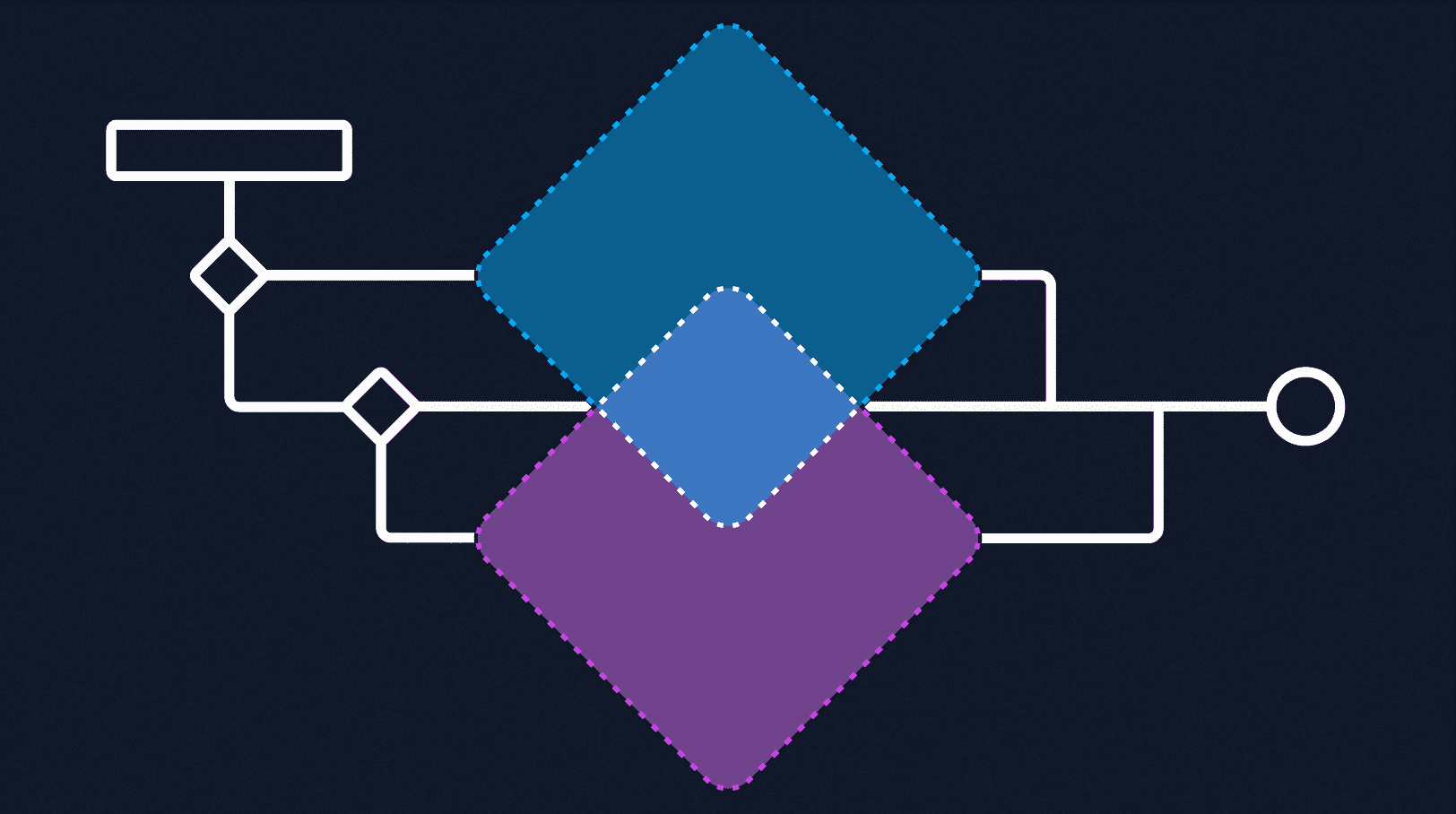
In enterprise software development, it’s understood that a “one-size-fits-all” solution can’t meet every business need.
Most enterprise IT departments have refined decision trees to determine which development method best satisfies their wide range of requirements. However, the pool of options has grown substantially in the last decade beyond traditional code platforms such as Java, Python, or C#.
Enterprises can choose to build software solutions from hundreds (maybe thousands) of options, which today also includes low-code and no-code platforms. While analysts like Forrester and Gartner consolidate and categorize these tools to aid in the early decision-making process, the latter predicts that by 2024, 75% of enterprises will be using at least four low-code platforms for development within IT and in support of citizen development initiatives.
Many industry-leading organizations are already leveraging several low-code platforms. ASML, a multinational leader in technology for the semiconductor industry, and Mammoet, a global heavy lifting and transport business, share their perspectives on balancing the role of traditional development and various low-code solutions in their business today.
Low-code keeps up with the pace of innovation
Gartner’s latest predictions show that by 2029, enterprise low-code platforms “will be used for mission-critical application development in 80% of businesses globally.” In the right context, the visual nature of low-code combined with enterprise-level governance capabilities makes for faster, collaborative, and controlled software development.
Speed was an early determining factor for ASML. Mendix Developer and Low-Code Competence Lead, Cleodene Mac Donald says, “Low-code came into the picture as a preferred IT solution to meet the business demands faster.”
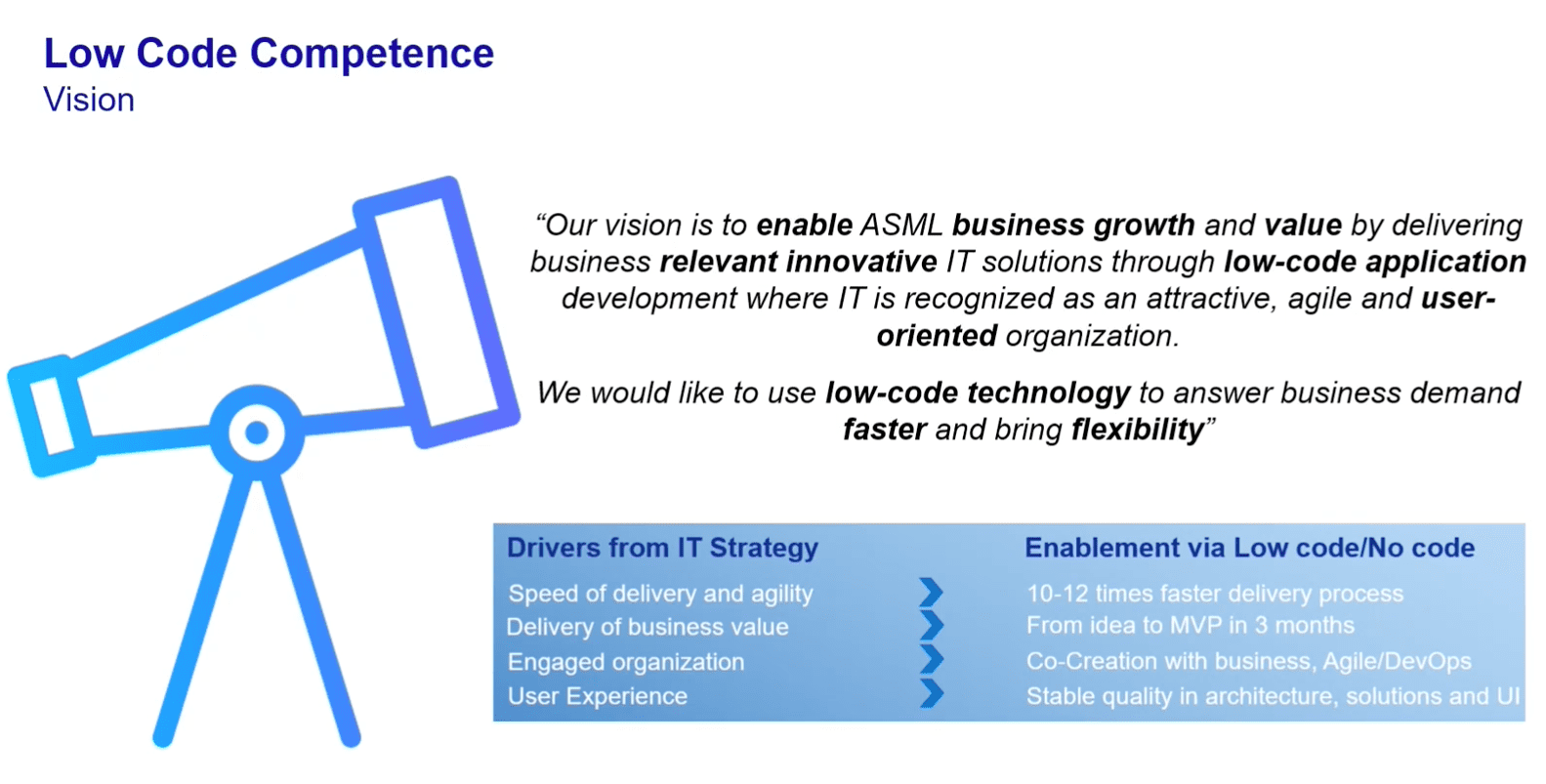
Mac Donald also acknowledges that Mendix has become one of many potential solutions for the ASML IT team to consider.
“You can imagine in our organization it would sometimes be overwhelming and confusing to figure out which [system] we should use. You’ve got a core strategic platform, like SAP and Teamcenter. Then, there are our low-code solutions like Microsoft Power Apps, ServiceNow, and Mendix. We also have high-code solutions for when that is needed. To help the business decide how to use the best platform for their problem or challenge, the Architectural Competence worked on a decision tree to inform this decision-making process.”
When ASML and Mammoet bypass early criteria, such as whether it makes more sense to buy a solution off-the-shelf or deliver with a system of record, their next step is to determine which low-code platform in their arsenal fits best with a given scenario.
Mendix and Power Apps
To deliver on rapid software development, both ASML and Mammoet are leveraging a mix of Mendix, a pure low-code platform, and Microsoft Power Apps, a platform with a low-code offering.
Rather than viewing these tools competitively, both organizations see merit and value in leveraging Mendix and Power Apps in different scenarios.
Microsoft has incredible existing market penetration, with over 1 million organizations using Microsoft Office worldwide. In many instances, it makes sense to simply “add on” a new platform license for Power Apps when Microsoft is so well-engrained in other areas of your business.
Their position as a low-code vendor is most prominently defined by their ability to work well with their own tooling, such as PowerBI or Dynamics. However, there is criticism of Power Apps’ ability to handle high-complexity use cases and openness to systems of record outside the Microsoft landscape.
John Helmink, Manager of Business Applications & Digital Innovation at Mammoet, says, “Being part of SHV Holdings [our parent company], which is a big Microsoft house, we had the Power Apps platform. Yet over the last couple of years we learned that it’s not sufficient to have just Power Apps, so we chose to engage with Mendix, which we’ve now been using for over five years.”
Mammoet and ASML have their own approach to determining which solution to use when, which can be summarized as an assessment of complexity in terms of the current use case, system integrations, and potential future state.
Use cases and functionality
In the early stages, both IT teams at ASML and Mammoet consider the complexity of the use case at hand. Considerations in this area may include:
- Volume of users and user groups
- Complexity of workflows and logic
- A need for multi-device or mobile capabilities
Helmink offers an example of a low-complexity use case in the context of Mammoet, which might be a user interface for standalone SharePoint lists, whereas high complexity would be a resource planning system which supports their entire engineering department.
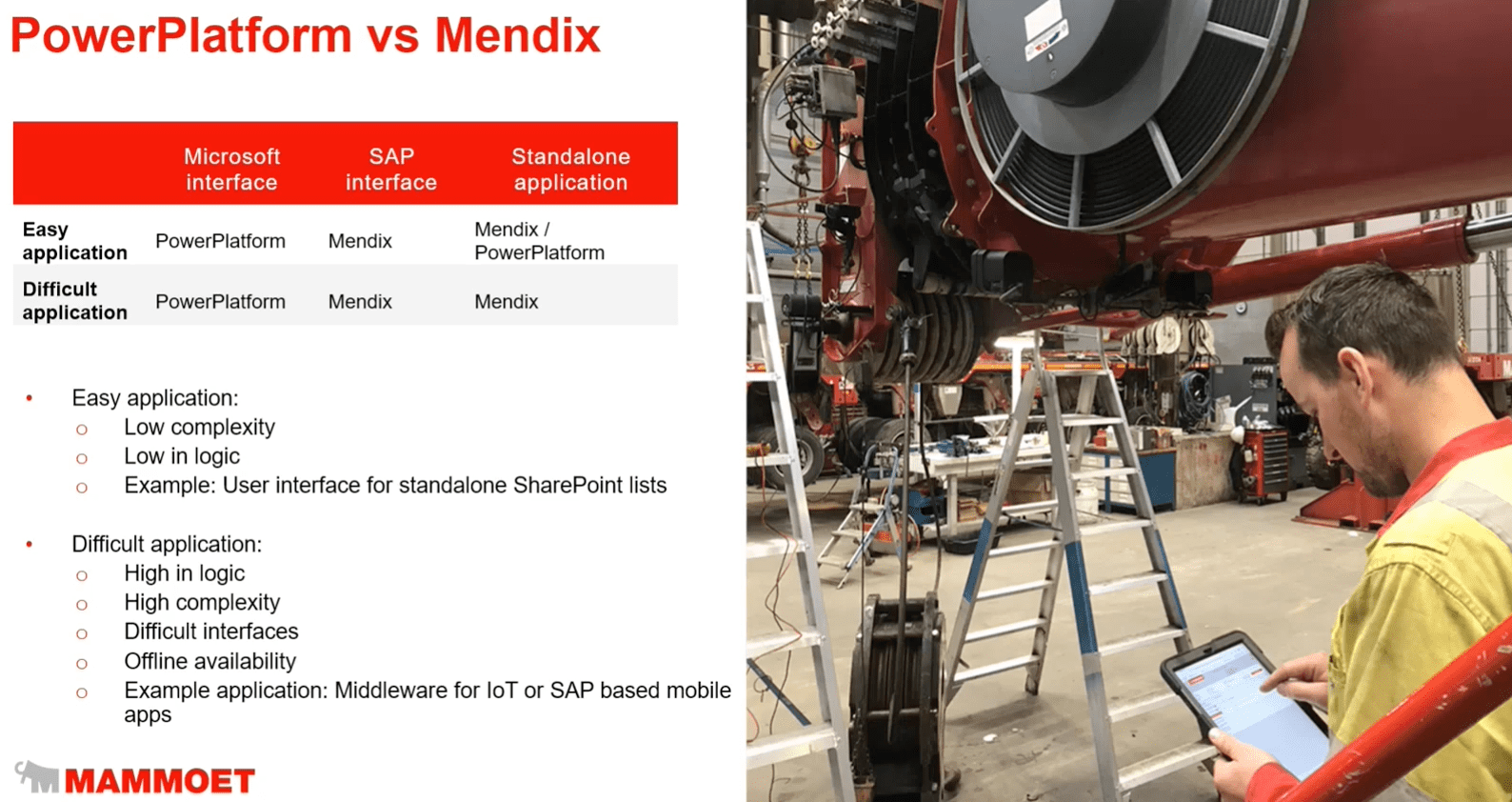
“If you really want to build something solid and used by a large group of people, our choice is Mendix… If it can be simple and interface with Microsoft applications, we choose Power Apps. There are some good cases where we use Power Apps on a daily basis to have people share information for administrative tasks such as requesting hardware or more simple request processes within the company.”
Integrations and openness
For both ASML and Mammoet, Mendix most often bubbles to the surface when an application simply does not need to interact with a Microsoft interface.
“If you want to interface with SAP, Mendix is our choice,” shares Helmink. One example of this within Mammoet is the YARD application, a complex solution which tracks the movement of equipment between sites and warehouses, is integrated with SAP, and runs on a scanning device.
On the perspective within ASML, Mac Donald adds, “The next question we’ll ask is can all the requirements be fulfilled in one single system? If the answer is yes, then the question is which system? If it’s Microsoft, then we advise to build in Power Apps. If it’s a CMDB application, then build in ServiceNow. If it cannot be fulfilled in a single system, then we recommend Mendix… When integrations are required, Mendix is preferred.”
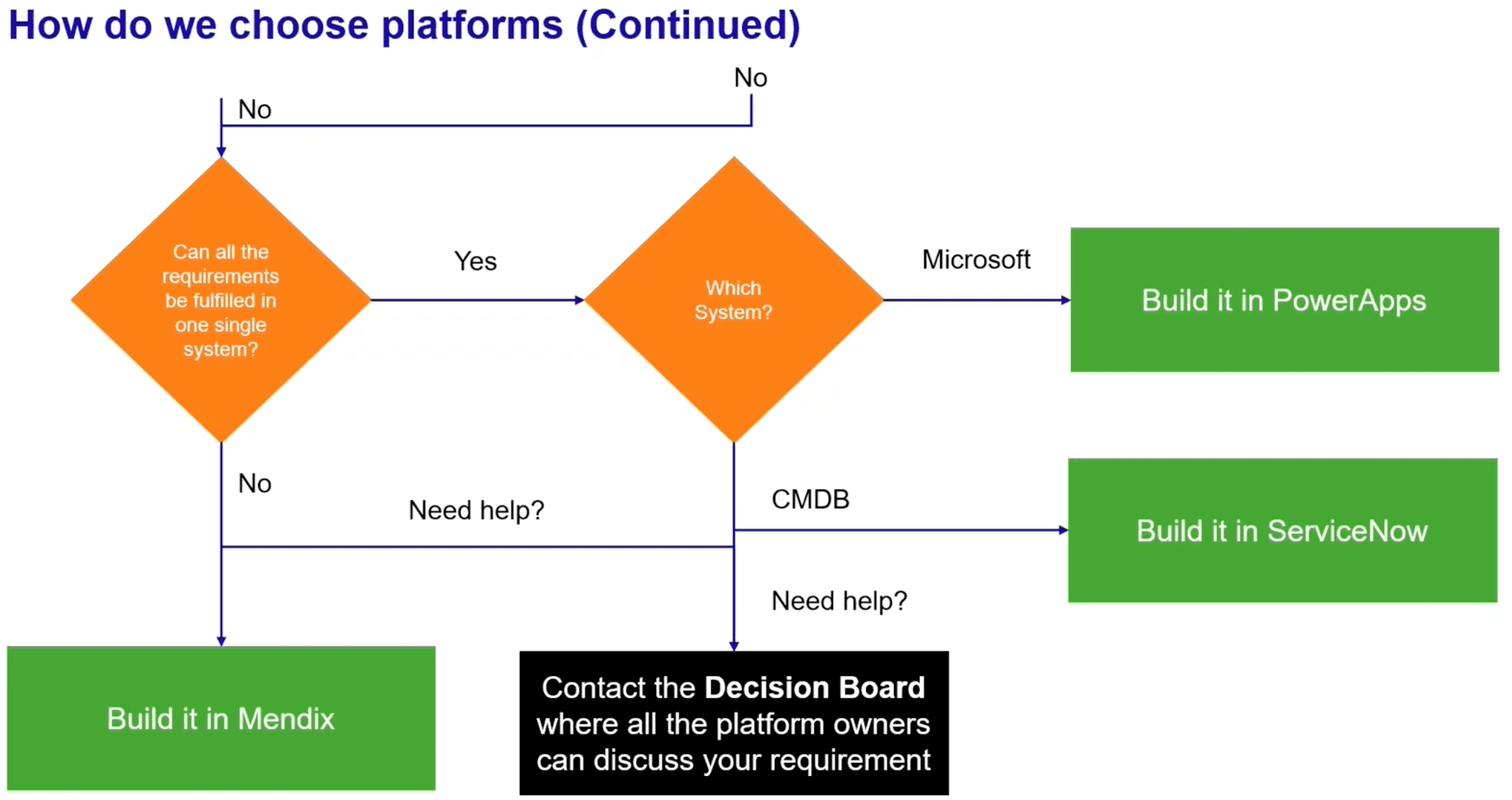
Future-state and flexibility
One detail Mac Donald stresses is the importance of not just assessing for what you need in an application today. “We cannot just look at what we need now, we also need to look at what are the future requirements.” This might mean adding new or emerging functionalities to your application, integrating additional systems, or how rigorous app maintenance might become. When the future appears to be more complex or is less certain, ASML and Mammoet often opt for Mendix.
Helmink says, “From a high level perspective, Microsoft is developing many different solutions with Power Apps just being one of them, where of course Mendix has all their focus on low-code. That is what we feel in the constant development of the products, and that is really helping us… Our experience is also that the Mendix apps require less maintenance, and when they do, it’s easier to repair.”
Mac Donald adds, “Mendix is the best option when you already know your application will require integrations in the future. Only use Power Apps and ServiceNow if you are sure about the future state, otherwise use Mendix, as it’s a full-stack solution.”
Underpinning each of these areas is varied complexity, which often becomes a deciding factor in using Mendix over Power Apps for Mammoet and ASML.
Process and vision enable low-code at scale
Today, ASML is achieving a 10-12x faster pace of delivery with low-code and no-code solutions as compared to traditional development, and has a portfolio of 26 Mendix applications in production, with another 26 in development and 10 in the pipeline.
Similarly, Mammoet’s portfolio of over 10 Mendix applications has helped the IT team deliver on a myriad of priorities, from modernizing legacy systems to delivering on innovation in the form of an IoT application.
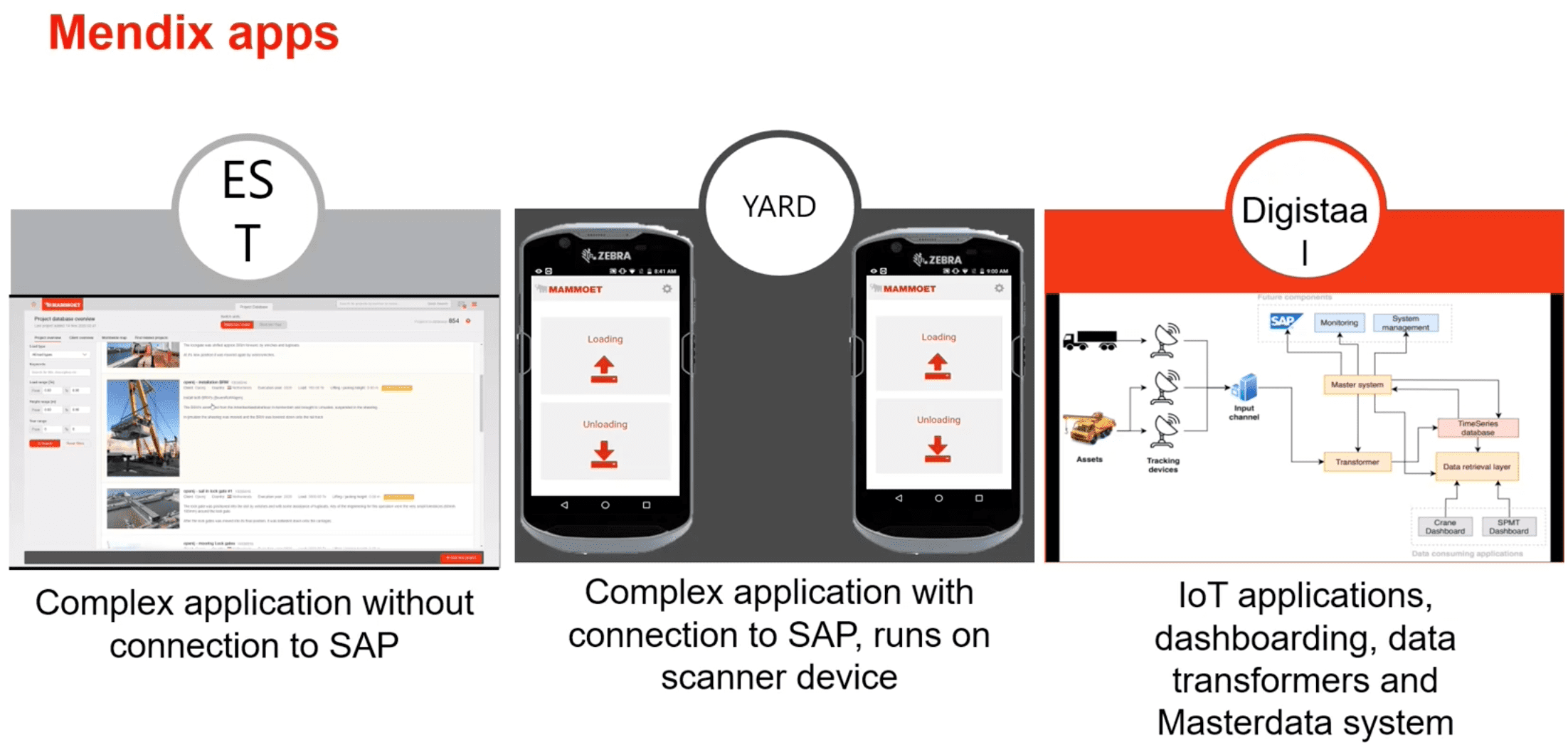 |
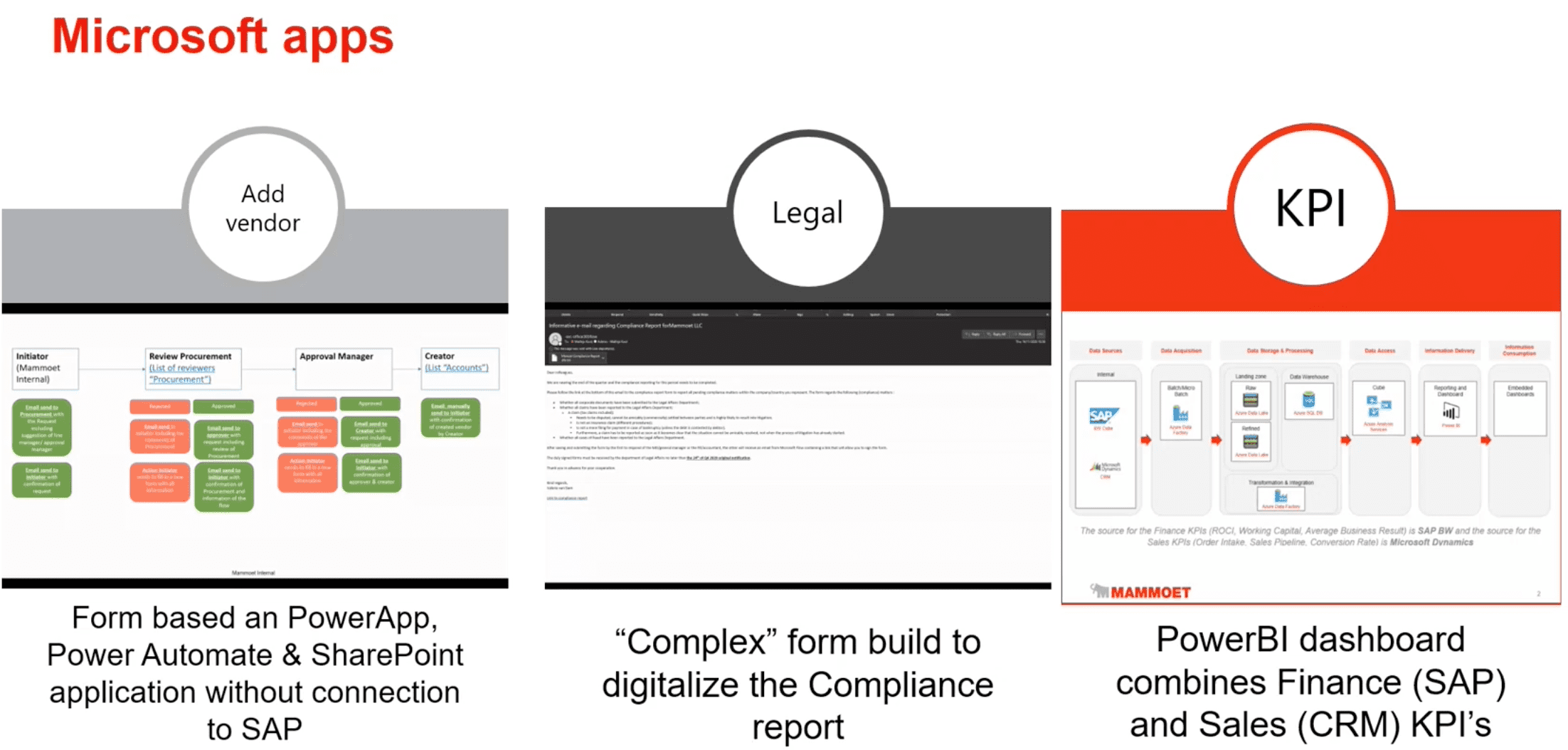 |
Both Mac Donald and Helmink confidently agree that Mendix and Power Apps can coexist and offer value in different ways. In both organizations, setting the structure for differentiation up front is a critical ingredient in their ability to reap the benefits of low-code and deliver software for the business quickly.
